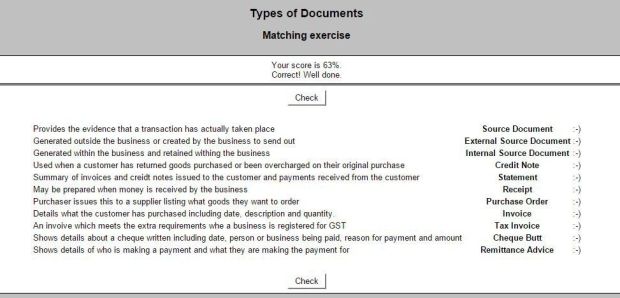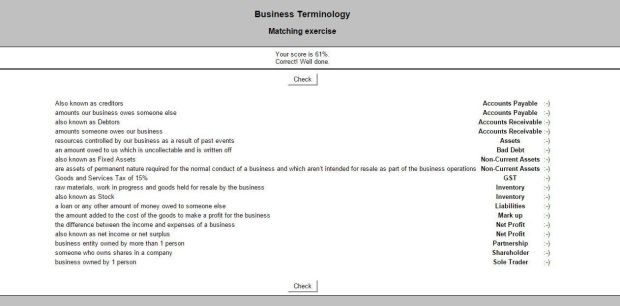But will our past really define us and sculpt our future? In order to answer this question we must first go back in time and look at where we came from, only then will we be able to look at where we are today and think about what the future may hold. So come with me on this journey into an amazing world of discovery.

http://i.imgur.com/XaAkwix.gif 16/03/2016
A long time ago in a galaxy far, far away…
From the dawn of time we have been “A bunch of violent monkeys” fighting and killing each other over the want of what others have, we could look at the story of Cain and Abel, supposedly the first humans ever born, where Cain lured his younger brother Abel into a false sense of security only to kill him because he was jealous of the attention Abel received from “The Lord” (if you believe in that stuff) but we won’t be going back quite that far today.
So I may have lied a little bit, although it was a long time ago, okay not really that long ago, the galaxy was definitely far away… okay fine, the galaxy wasn’t that far away either, it was actually really close to home, so close in fact that if you’re a New Zealander, it’s to do with the country you call home. That’s right, you guessed it (or didn’t, it doesn’t matter I’m going to tell you anyway) Today, among many other things, I’m writing about the Treaty of Waitangi. So let’s take a closer look…
New Zealand and the rest of the world
Do you have a Flag? Well I’ve got a Flag
In 1835, New Zealand declared its independence when the appointed British resident, James Busby, created New Zealand’s Declaration of Independence. This is loosely similar to when Chile declared independence from Spain in 1810.
It is similar because, well obviously both countries declared their independence, but this also led both countries to select their first national flags.

New Zealands First Flag http://www.nzhistory.net.nz/files/images/stories/classroom/flag1.jpg 16/03/2016

Chiles First Flag https://upload.wikimedia.org/wikipedia/commons/thumb/3/35/Flag_of_Chile_(1812-1814).svg/2000px-Flag_of_Chile_(1812-1814).svg.png 16/03/2016
Official Documents, They Mean Stuff
In 1840 the Treaty of Waitangi was signed by many Maori Chiefs and English representatives, the treaty wad understood by Maori as a joining the two nations, however, this was not accepted or agreed upon by everyone and many Maori Chiefs refused to sign or were not even given the opportunity. This is similar to the enactment of the Acts of Union in Ireland which started in 1800 and came into effect on January 1st, 1801.
These two events share some similarities because, although both pieces of legislation were seemingly designed as an act of unity between Great Britain and the other nations, much like the Treaty of Waitangi not being accepted and agreed upon by all of the relative parties in New Zealand, the Acts of Union was not accepted or agreed upon by everyone holding power in Ireland. Another similarity between these two events are the problems that occurred in each country after the introduction of these legislations that were supposed to bring unity and peace, both New Zealand and Ireland experienced civil wars, in New Zealand this was known as the Maori Wars, now known as The New Zealand Wars, similarly, Ireland experienced the Tithe War.
Story Time! Story of the Treaty
I read both Parts 1 and 2 of the story, or should I say re-read? With the number of times I’ve been forced to cover this topic I should be able to give a detailed description of the history including specific dates and recite the Treaty off by heart but, not to disrespect our heritage at all, quite honestly, for the most part, I find the subject relatively boring, this not only makes it hard to read, again, it also makes the documents seem much longer than they actually are. Something that did stick out for me though was The Declaration of Independence, more specifically the fact about our first flag (pictured above). The only reason I found this interesting is because of the flag referendum we’re currently in the middle of, now that subject could be a whole post in itself but I will say this, 1) I don’t remember seeing our first flag as an option and 2) Do you know how many sandwiches you can buy for $26 million? Well, neither do I but I imagine it’d be enough to feed most, if not all, of the less fortunate New Zealand children that are going to school every day hungry and without food.
Adding the UN to DRIP
The United Nations Declaration on the Rights of Indigenous Peoples (UNDRIP) is a legislation designed to protect the human rights of indigenous people, this relates to the Treaty of Waitangi in many ways.
Article 8.2b
“Any action which has the aim or effect of dispossessing them of their lands, territories or resources” (http://www.un.org/esa/socdev/unpfii/documents/DRIPS_en.pdf – 15/03/2016)
Prior to the Treaty dispossession of land and resources is something that Maori people were effected by immensely, many of them were tricked or forced out of their land and a lot of these issues are still being resolved today through the Office of Treaty Settlements.
Article 14.1
“Indigenous peoples have the right to establish and control their educational systems and institutions providing education in their own languages, in a manner appropriate to their cultural methods of teaching and learning.” (http://www.un.org/esa/socdev/unpfii/documents/DRIPS_en.pdf – 15/03/2016)
This is something that is currently being addressed actively with the subject of Te Reo Maori being made compulsorily right from early education in New Zealand schools alongside English. This is more in-line with Maori peoples understanding of the Treaty being a unity of two nations.
Article 16.1
“Indigenous peoples have the right to establish their own media in their own languages and to have access to all forms of non-indigenous media without discrimination.” (http://www.un.org/esa/socdev/unpfii/documents/DRIPS_en.pdf – 15/03/2016)
This is another subject that is actively being addressed with Maori Television Channels and Maori Radio available to everyone alongside English channels and radio stations, once again in-line with the idea of unity under the Treaty.
When someone plants a flag bigger than yours.
I believe it is important for indigenous people to retain their rituals, beliefs and other aspects of their culture after being colonised by a larger culture. When government is formed I feel it should include a party, or parties, of representatives of the indigenous people who can have an equal say on any law changes or new legislation.
Protecting our Indigenous Culture
One way to protect and preserve Maori Culture is through laws and legislation, one such thing is the Protected Object Act 1975 this is a legislation designed to protect and preserve Maori culture by preventing the theft and/or export of Maori Cultural Property such as traditional art and artefacts, otherwise known as taonga tūturu.
What does any of this actually have to do with the IT Industry?
Honestly, I have absolutely no idea, My personal opinion, which I fear may be a bold one, is that this subject must be compulsory to teach as part of every curriculum in New Zealand regardless of the main subject. It may have some small bearing on the IT Industry within New Zealand but globally I doubt it makes an ounce of difference.
Speaking of globally though, if we step back and simply look at Britain as a large company and New Zealand as a small one we could relate this to modern times as a large company taking over or overpowering a smaller one and we can use a juicy example to highlight some of the dangers of our technological world. One such example would be the story of MakerBot, Stratasys and Cody Wilson, that’s right it’s only taken me 1286 words but we’ve gone from the Treaty of Waitangi to 3D Printers. I was hoping to get to 1840 for effect but what year other than 1286 had the War of the Ass? Seriously that’s a thing.
The story of MakerBot should be one that is well known by now, they were a small company with a vision to bring 3D printers to the domestic market, sparked from the idea of companies like Stratasys and 3D Systems who had been producing 3D printers for the industrial market for quite some time already. In 2013, Stratasys LTD bought MakerBot Industries for the small sum of $403 million dollars, the takeover. Cody Wilson is one of the most well-known people for highlighting the dangers of making this technology so widely available to the general public by designing, printing and firing the world’s first 3D printed plastic gun, then proceeding to share those designs openly online.
Despite many attempts to remove those designs from the Internet so far there is nothing in place to stop someone from buying a 3D printer, downloading those designs, printing the gun and going on a rampage. Of course, the laws already in place will affect them afterwards but by then it would be too little too late.
It also seems to me that many of the laws and legislations involving business around the world are more in place to help and protect larger companies while making things harder for smaller companies.
So what have we learnt from all of this?
Does our past really define our future? It would seem in a lot of ways yes, even in this digital age we live in there are still many people, companies and countries doing the same old things just in more sophisticated ways with fancy new names. Many humans are still violent by nature, large companies are squashing smaller companies all over the place and we still have major wars happening in the world. Will it carry on like this? Who knows, we’re all just grains of sand in the huge hourglass of time.
Sub-notes
Oh, the Tinfoil!

keenforgreen.com 16/03/2016
You may be sitting there thinking I went full tinfoil on this post, if you are I don’t blame you, I really doubted myself on this one and seriously considered not even publishing it, but mainly for the sake of me not wanting to have so much time wasted for nothing, oh and for your entertainment of course, there it is.
Clarification for the avid Key fans. You don’t have to read this unless you were offended.
Being that it seems to be a fairly sensitive subject I would just like to clarify my statements about the flag referendum, these were based on my own personal opinion, of which we are all entitled, I personally believe change can be a good thing and I do actually like the new design, my issue with it is that, in my opinion, it is a huge waste of money that not only could have but should have been spent on quite literally any one of the much larger issues we have in our country. If this offends you I am sorry, let’s just be friends anyway.











